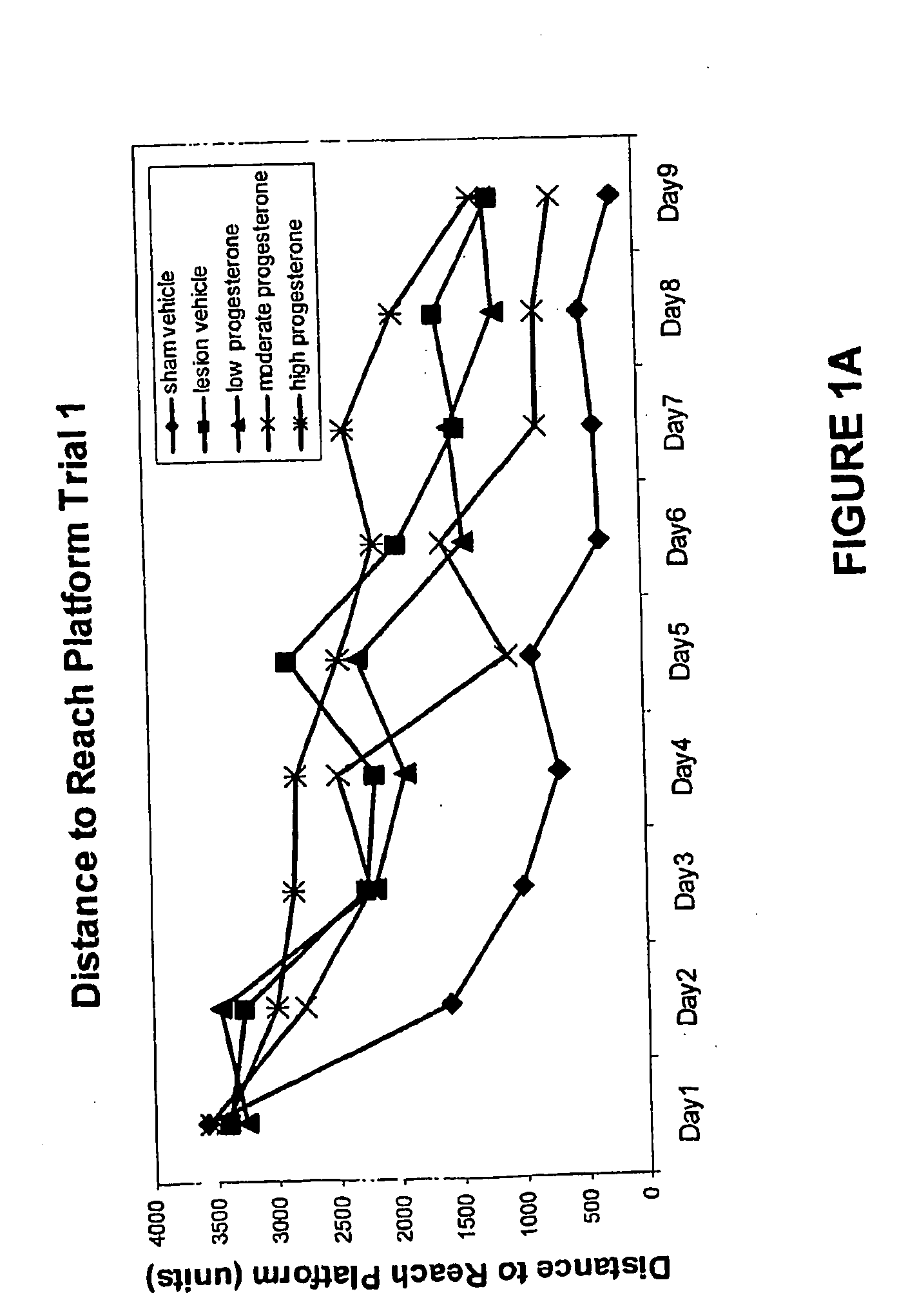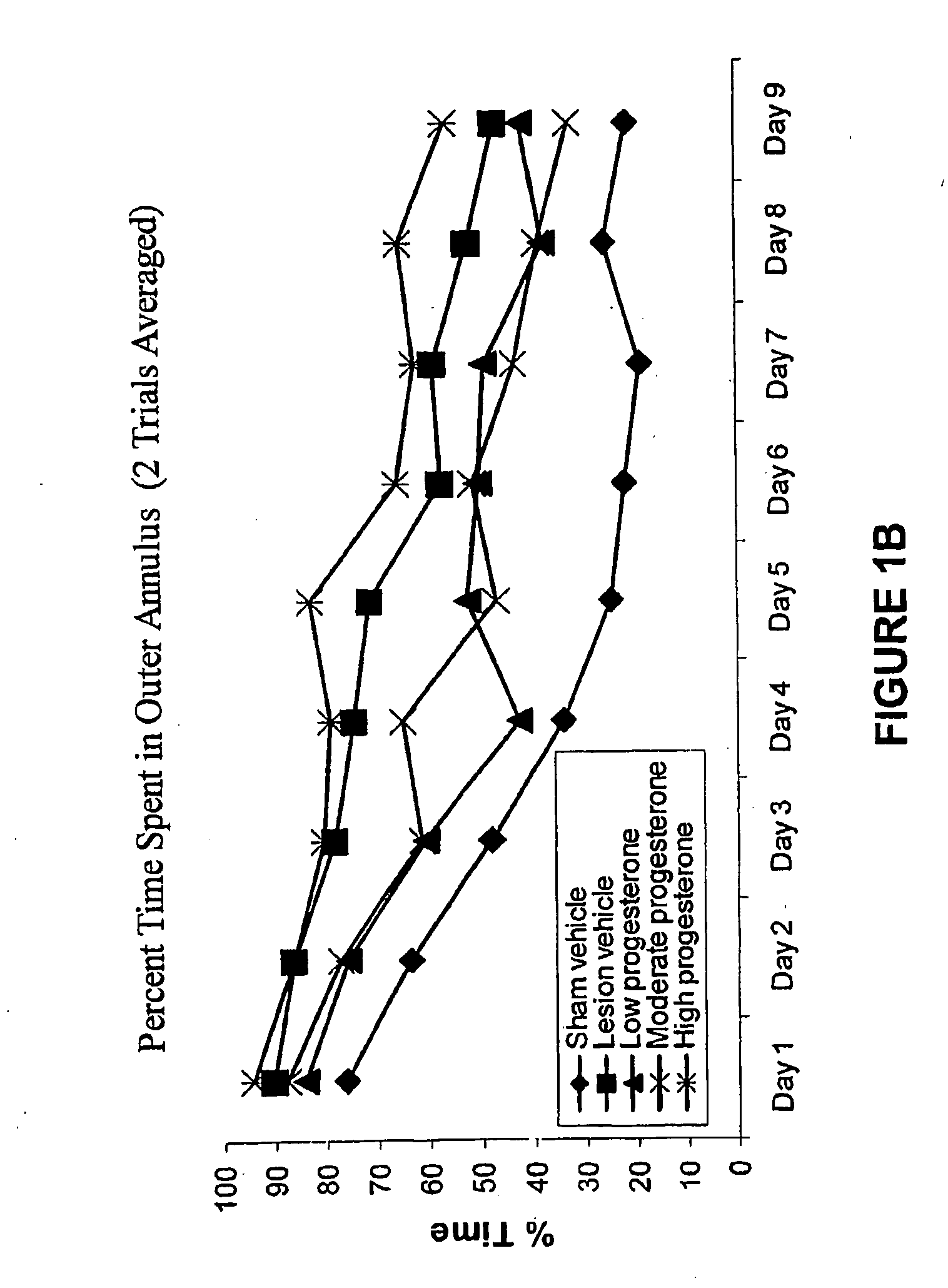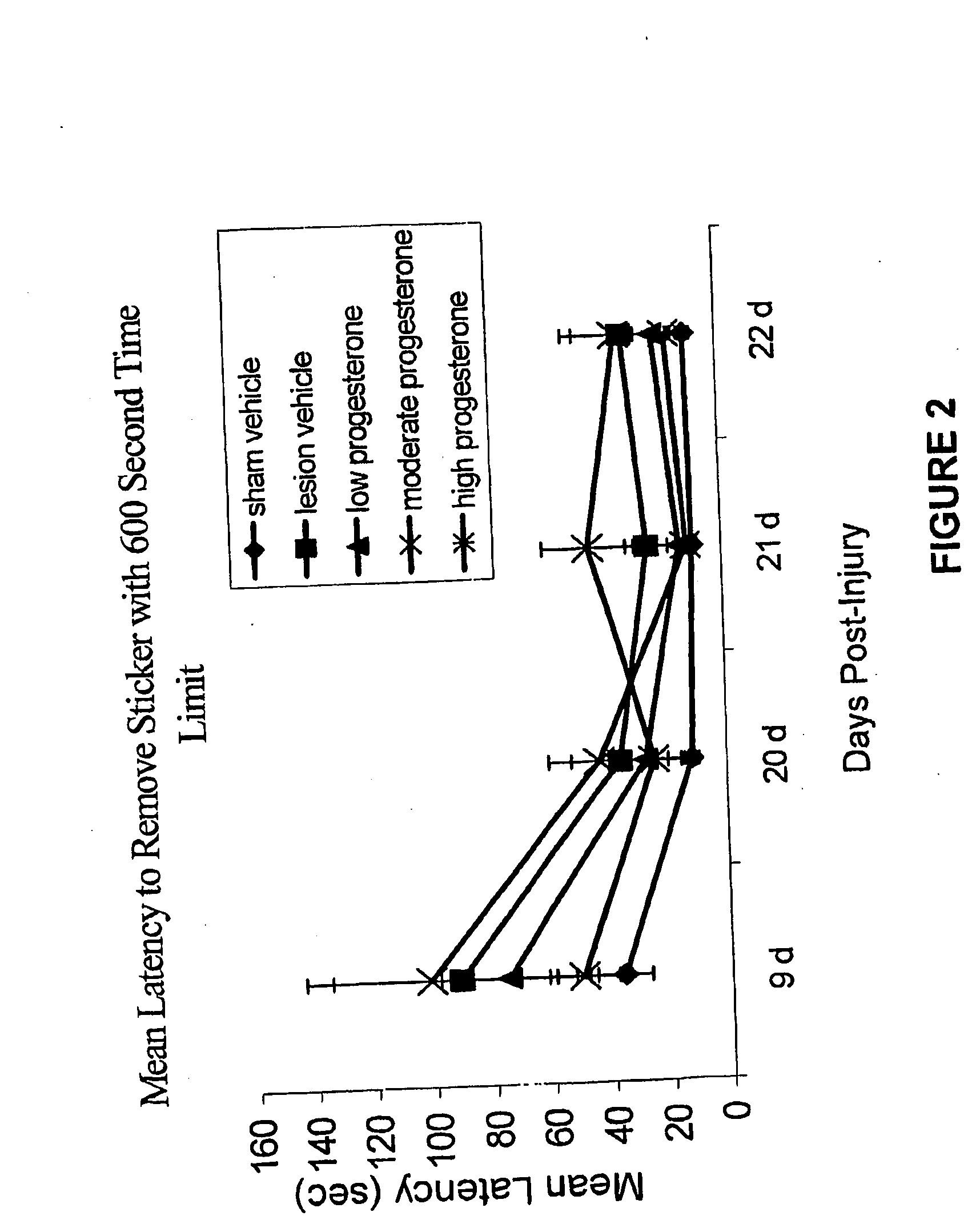Methods for the treatment of a traumatic central nervous system injury via a tapered administration protocol
- Summary
- Abstract
- Description
- Claims
- Application Information
AI Technical Summary
Benefits of technology
Problems solved by technology
Method used
Image
Examples
example 1
Effects of Progesterone on Necrotic-Damage and Behavioral Abnormalities Caused by TBI
Methods:
[0088]Male Sprague-Dawley rats (300 g) were housed individually in wire cages and kept on a reverse light-dark cycle (0800-2000 h). Animals were assigned to one of four groups: (1) lesion (n=7); (2) lesion+3 days progesterone (LP3; n=7); (3) lesion+5 days progesterone (LP5; n=7); and (4) Sham (n=8). All procedures involving animals conformed to guidelines set forth in the Guide for the Care and Use of Laboratory Animals (U.S. Department of Health and Human Services, Pub no. 85-23, 1985) and were approved by the Emory University Institutional Animal Care and Use Committee.
[0089]Bilateral contusions of the medial prefrontal cortex were created by a pneumatic impactor device as previously described [40]. Briefly, rats were given anesthetized with ketamine / xylazine (90 mg / kg; 10 mg / kg) and placed in a stereotaxic apparatus. A craniectomy (diameter 6 nm u) was made over the midline of the prefron...
example 2
Dosage Response Curves for Behavioral Recovery Following TBI Upon Administration of Progesterone in a Cylcodextrin Vehicle
Methods:
[0106]Surgery to induce a traumatic brain injury was performed as outlined in Example 1. Behavior testing using the Morris Water Maize was performed as outlined in Example 1 and the methods for the tactical adhesive removal were performed.
Results:
[0107]FIGS. 1A and 1B demonstrate that low and moderate doses of progesterone (8 mg / kg & 16 mg / kg in a cyclodextrin-containing vehicle) produced consistent improvement in Morris water maze performance, whereas the high dose of progesterone (32 mg / kg in a cyclodextrin-containing vehicle) did not show any beneficial effect.
[0108]The sticker removal task is a test for sensory neglect which is a primary deficit for frontal injury. In this task all doses initially produce behavioral recovery, however, the group receiving the high dose of progesterone degraded to lesion control levels and the moderate dose, which was i...
example 3
Tapered Progesterone Withdrawal Enhances Recovery after Traumatic Brain Injury
Methods:
[0109]Male Sprague-Dawley rats received either medial frontal cortex injury or sham surgery. Injections were given 1 and 6 hours post-injury, and every 24 hours for 7 days. Treatment groups (n=8) encompassed injured (1) and sham (S) acute withdrawal (AW), tapered withdrawal (TW) and vehicle (V) treatments. TW injections were progressively halved over the final two treatments. Behavioral testing was conducted post-surgery, mid- and post-withdrawal. Activity boxes were used to investigate vertical movements and exploration. Sensory neglect and anxiety behaviors were also analyzed. Brain harvesting was performed at 8 days or 3 weeks post-injury. Perfused tissue sections were analyzed for lesion volume and immunohistochemical response. Fresh brain tissue was flash frozen in chilled 2-methyl butane, and then homogenized for Western blot analysis.
Results:
[0110]Acute withdrawal and injury (AWI) interacted...
PUM
 Login to View More
Login to View More Abstract
Description
Claims
Application Information
 Login to View More
Login to View More - R&D
- Intellectual Property
- Life Sciences
- Materials
- Tech Scout
- Unparalleled Data Quality
- Higher Quality Content
- 60% Fewer Hallucinations
Browse by: Latest US Patents, China's latest patents, Technical Efficacy Thesaurus, Application Domain, Technology Topic, Popular Technical Reports.
© 2025 PatSnap. All rights reserved.Legal|Privacy policy|Modern Slavery Act Transparency Statement|Sitemap|About US| Contact US: help@patsnap.com



